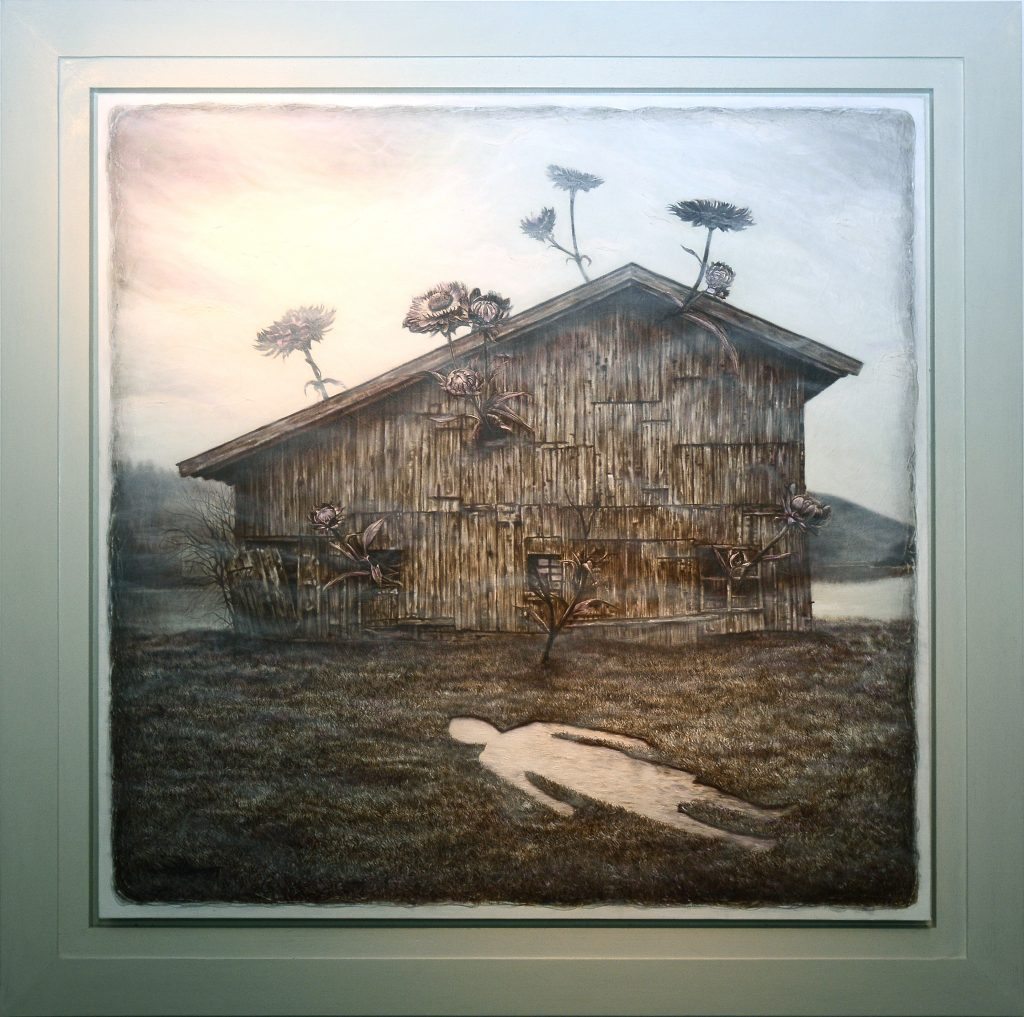UNDERNEATH THE FLEETING CLOUDS
Don Bryan Bunag
September 2 - September 13, 2017

Immense Disappearances:
Under the Fleeting Clouds by Don Bryan Bunag
From wispy to billowy, from feather-like to monumental like a mountain range, clouds add a feature to an otherwise flat sky, deepening pockets of space, throwing shadows on the land or breaking the sun into shafts of light. As agents of weather, clouds are part in the never-ending cycle of water and necessary to the cultivation of life.
In Don Bryan Bunag’s Under the Fleeting Clouds, the artist’s first one-man show, these magnificent meteorological forms coalesce into a point of contemplation and gain a central role in the narrative of the paintings. For the artist, who as a child would always look at the sky to ponder upon the heavenly formations, the clouds—in constant flux and shift and transformation—approximate life itself: never fixed in a single state but is in constant negotiation through the space in which it moves.
This idea is epitomized by the work, “Constant War,” in which a figure of a child, evoked as a silhouette of water on the grass, mirrors the sky above him. Whatever change the cloud undergoes is registered on the reflective surface of the figure. In this particular moment of the painting, the human and the celestial, the internal soul and the external world, are fused. Time is the granular element that binds the details together: even the house in the background is seen to have been overgrown with large, stupendous flowers.
One may surmise that the artist is drawing from the vein of surrealism, but his works, though having a peculiar dreamlike quality, are not symbolical in a way that dreams are symbolical. They are visions of the real inflected with a hallucinatory quality. While Bunag’s scenery may be in monochrome (predominantly in sepia, which is the tint of memory), they reveal an urgent, palpable presence, as though there is an actual wind bending the grass or an atmosphere that allows the scattering of light.
In these paintings of utmost picturesque beauty (an abandoned fireplace smoldering on a beach, two bicycles lying idly on a landscape on which a lighthouse looms) are always the clouds that provide the emotional tone to the scenery—thick and foreboding in some, thin and benevolent in others. In deploying natural forces to provide the mood of the work, Bunag aligns himself with the artists of the pastoral genre, such John Constable who once called clouds as painting’s “chief organ of sentiment.”
With that said, Bunag’s uniqueness lies on his resistance to an easy sentimentality. Frayed at the edges, sepia-toned, his paintings are not static but are preludes—or conclusions—to a story. What happens before—or after—every scene is the howling desolation that surrounds the work, whose remnant happens to be a sewing machine, a typewriter, a stack of unopened letters bound by a ribbon. We’ll never know if the sewing machine or the typewriter will be used, the letters will be read.
In Under the Fleeting Clouds, Bunag underscores the brief flame of our lives we try to keep steady under the immense disappearances. No strand of grass, no piece of rock, no human imprint beneath the clouds will remain unchanged. But their mortality does not in any way diminish their momentary presence which, in these paintings, is shown to be persistent and durable, crowned with butterflies and flowers, lit by starlight, swaddled by clouds.
—Carlomar Arcangel Daoana